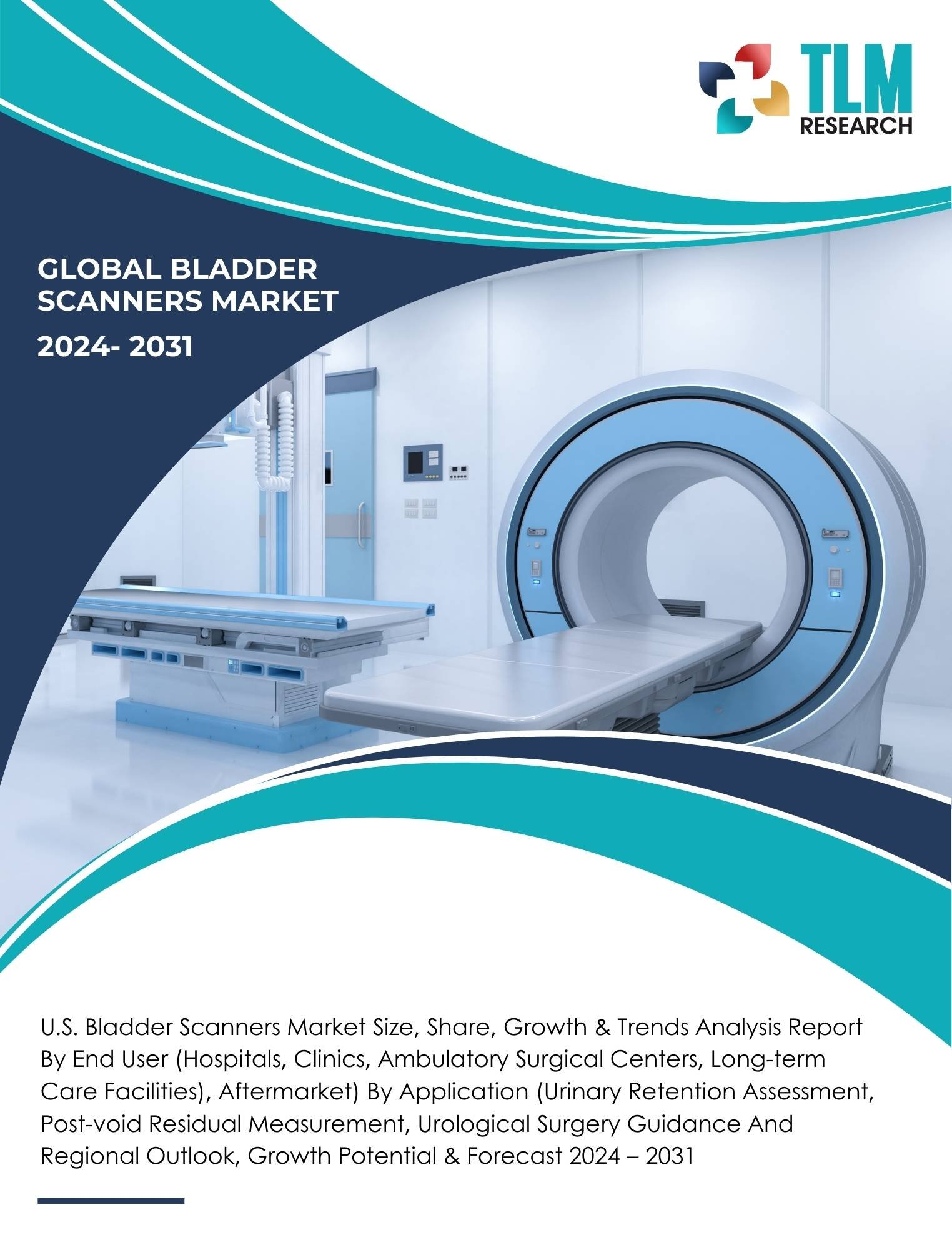Description
Scope U.S. Bladder Scanners Market
This covers the variety of bladder scanning gadgets on the market, including wireless, tabletop, and portable handheld scanners. These devices are mostly used in healthcare settings for urine evaluation and catheterization guiding. They measure bladder volume non-invasively. The market serves a wide range of end users, such as urology offices, clinics, long-term care homes, ambulatory surgery centers, and hospitals.
Healthcare workers that provide urological care, such as urologists, nurses, and primary care physicians, use bladder scanners. Bladder scanners are employed in many different contexts, such as evaluating postoperative urine retention, monitoring bladder function in patients with neurological disorders, and directing catheterization treatments. The range of application includes bladder scanning technological breakthroughs, including enhanced accuracy, portability, user-friendliness, wireless connectivity, and integration with telemedicine platforms and electronic health records (EHRs).
The U.S. Bladder Scanners Market ECG Patch and Holter Monitor Market was worth USD 149.49 Million in 2023 and is expected to grow to USD 217.46 billion by 2030, at a CAGR of 5.50 percent during the forecast period. The research looks at the market in terms of revenue in all of the key regions, which have been divided into countries.
Impact of COVID – 19
Healthcare facilities encountered difficulties with staffing shortages, the prioritizing of COVID-19 patients, and resource allocation during the pandemic’s peak. The demand for bladder scanners temporarily decreased as a result of non-urgent operations, such as bladder scanning for routine urine evaluation, being postponed or rescheduled.
In healthcare settings, it became critical to implement infection control measures, such as eliminating needless patient contact and lowering the danger of cross-contamination. In order to reduce the risk of infections linked to healthcare, non-invasive bladder screening techniques have become more popular than invasive treatments like catheterization.
U.S. Bladder Scanners Market: Growth Drivers
1. Growing Prevalence of urine diseases:
The need for bladder scanners for precise diagnosis and treatment is being driven by the increased prevalence of urine diseases, including urinary retention, incontinence, and urinary tract infections.
2. Technological Developments:
The accuracy, effectiveness, and user-friendliness of bladder scanners are being improved by ongoing developments in ultrasound technology, including 3D imaging, wireless connectivity, and portable handheld devices. This is fueling the market’s expansion.
3. Pay Attention to Less Invasive Procedures:
Non-invasive diagnostic treatments are becoming more and more popular than invasive ones. Bladder scanners are helping to propel the industry forward by providing a non-invasive bladder volume assessment method instead of catheterization.
4. Aging Population:
An increasing number of bladder scanning devices are needed for monitoring and diagnosis since older people are more likely to have urinary issues such as incontinence and urine retention.
Restraints
High Device Cost: Some healthcare institutions may find it difficult to deploy bladder scanning technologies due to the high initial cost and continuing maintenance costs, especially in environments with limited resources.
Regulatory Compliance: Manufacturers may have difficulties adhering to regulatory requirements, such as FDA rules and quality assurance standards, which might affect product availability and time-to-market.
Reimbursement Difficulties: The expansion of the bladder scanning procedure market may be impeded by inconsistent rules and restricted reimbursement rates, particularly for outpatient facilities and smaller clinics.
Opportunity Factors
Product Innovation: Increased market penetration in non-traditional venues such urology clinics, home healthcare, and ambulatory surgical centers might lead to market expansion.
Product Innovation: To improve the usability and performance of bladder scanning equipment, manufacturers have the opportunity to innovate and incorporate new features including real-time imaging, wireless connectivity, and integration with electronic health records (EHRs).
Challenges in U.S. Bladder Scanners Market
1. Competition from Alternatives:
The use of catheterization and ultrasound, two other techniques for determining bladder volume, pose a threat to bladder scanning equipment and might restrict their market growth.
2. Technological Complexity:
The complexity, precision, and usefulness of bladder scanning technologies might differ. The best technology for a healthcare provider’s unique clinical demands and patient group may be difficult to choose and execute.
3. Educational Barriers:
In situations where healthcare workers have little prior experience with bladder scanning technologies, education and training programs may be necessary to guarantee appropriate use of the equipment.
Recent Developments in U.S. Bladder Scanners Market
Vitacon US, LLC: Vitacon is a producer of ultrasound imaging devices and bladder scanners. Updates on product development, regulatory approvals, or entry into new markets are examples of recent developments.
Becton, Dickinson and Company acquired C. R. Bard, Inc. Bard is now a part of BD and provides a variety of surgical and urological products, including bladder scanning technologies. Updates on product integration throughout BD’s portfolio or progress in urological care might be considered recent advances.
Bladder scanners are among the medical equipment provided by renowned healthcare supply business Medline Industries, Inc. Updates on product distribution, collaborations with manufacturers, or efforts to enhance patient care are examples of recent changes.
Key Outcomes of the Report
The report will provide insights into the U.S. bladder scanners market size and projected growth, including historical data, trends, and forecasts. It will detail market segmentation based on bladder scanner type, technology, end-users, applications,, helping stakeholders identify growth opportunities. The report will also analyze the competitive landscape, key players, market shares, strategies, and recent developments.
List of Key Players in the U.S. Bladder Scanners Market:
- Verathon Inc. (Acquired by Roper Technologies)
- Signostics (Now part of Welch Allyn, a subsidiary of Hillrom)
- C. R. Bard, Inc. (Acquired by Becton, Dickinson and Company)
- Vitacon US, LLC
- Medline Industries, Inc.
- Mcube Technology Co., Ltd.
- Caresono Technology Co., Ltd.
- dBMEDx, Inc.
- EchoNous, Inc.
- SRS Medical Systems, Inc.
U.S. Bladder Scanners Market: Segmentation
By Bladder Scanners
- Portable Bladder Scanners
- Handheld Bladder Scanners
- Benchtop Bladder Scanners
By Technology
- 3D Ultrasound Bladder Scanners
- 2D Ultrasound Bladder Scanners
By Application
- Urinary Retention Assessment
- Post-void Residual Measurement
- Urological Surgery Guidance
By End-User
- Hospitals
- Clinics
- Ambulatory Surgical Centers
- Long-term Care Facilities





